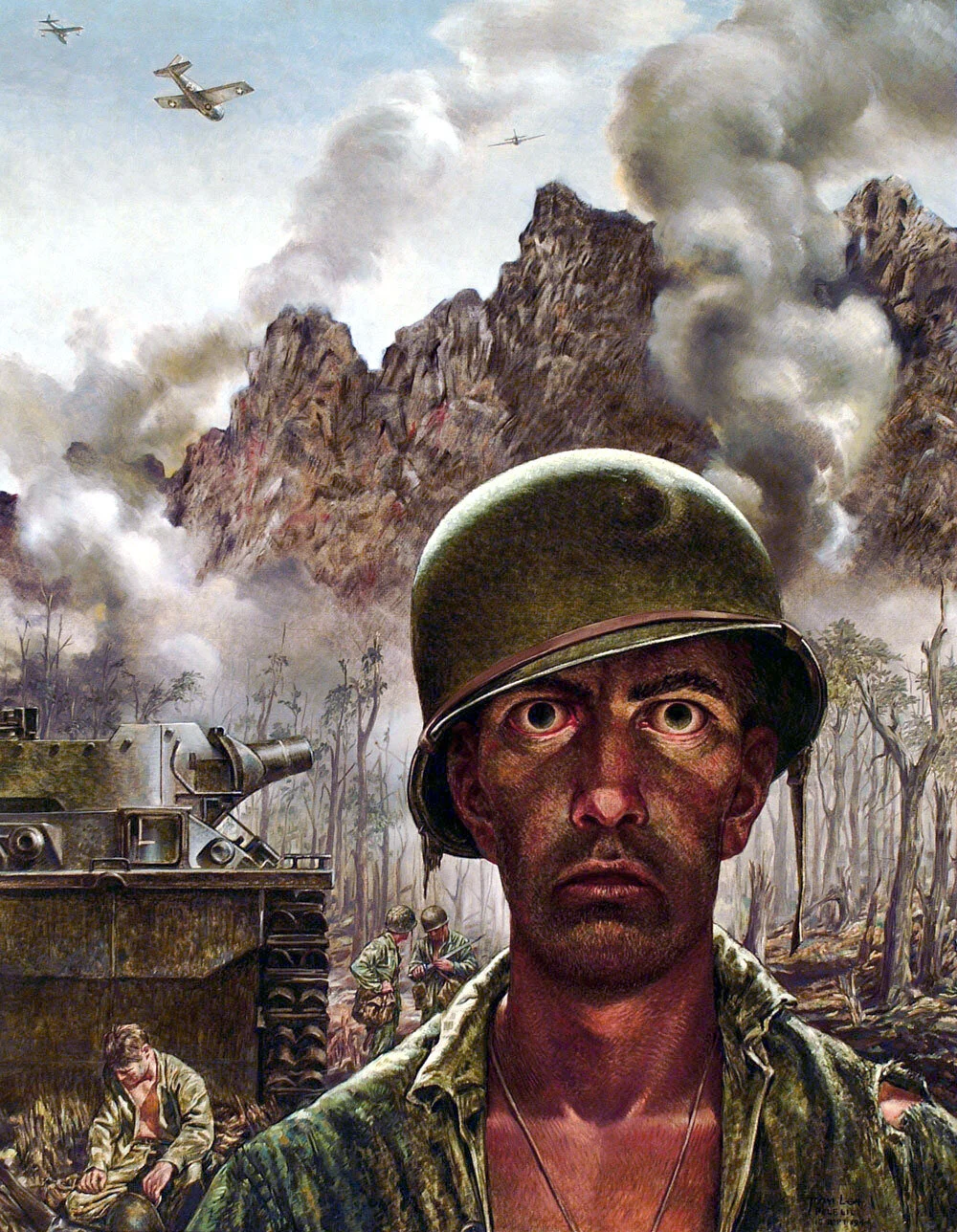Content Warning: This article discusses sensitive and potentially disturbing topics related to World War II, including genocide, widespread atrocities, immense human suffering, and war crimes. Reader discretion is advised.
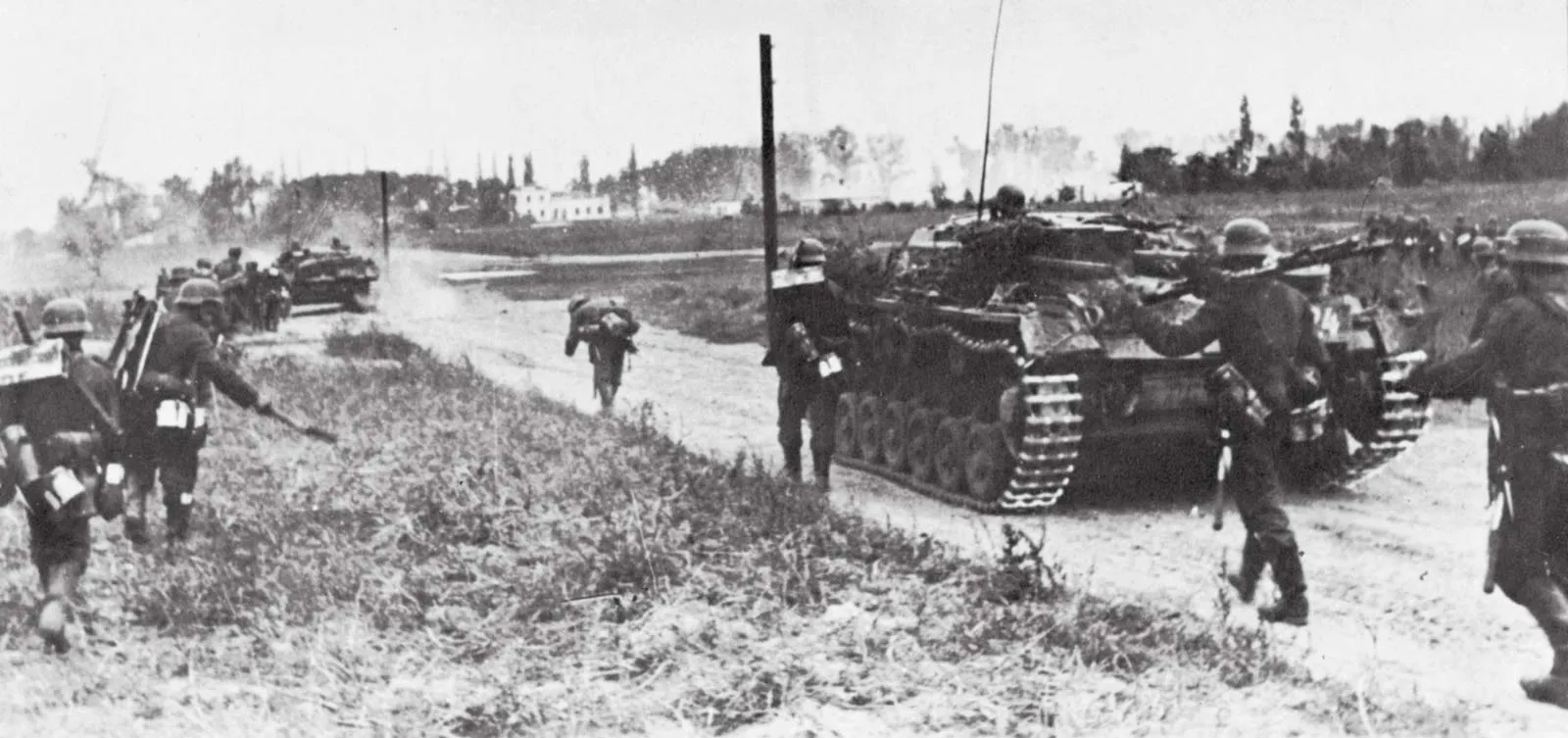 German tanks and infantry advancing in Poland, September 1939, emblematic of the swift Blitzkrieg tactics that initiated World War II. This image serves as the icon for the 'Ww2' wiki page.
German tanks and infantry advancing in Poland, September 1939, emblematic of the swift Blitzkrieg tactics that initiated World War II. This image serves as the icon for the 'Ww2' wiki page.
Our Community Rules
To maintain a collaborative and informative environment, please adhere to the following community guidelines:
- Contribute Constructively: All edits should aim to improve the article by adding accurate, relevant, and well-sourced information.
- No Vandalism: Do not introduce nonsense, delete significant content without explanation, or deface the page.
- Avoid Misinformation: Ensure all facts are verifiable. If unsure, use the discussion page.
- Maintain a Neutral Point of View: Present information fairly and avoid bias.
- Respect Others: Engage in polite discourse on the discussion page. Personal attacks or 'griefing' are not tolerated.
- Use Proper Formatting: Utilize markdown consistently for headings, links, and lists.
- Add Citations: For new or controversial information, please provide references.
- Suggest Improvements: If you have suggestions but aren't comfortable editing, please post on the discussion page.
World War 2
World War II (WWII), a global conflict of unparalleled scope, devastation, and technological transformation, fundamentally reshaped the 20th century. Lasting from September 1, 1939, to September 2, 1945, this cataclysmic struggle pitted two major ideological and military alliances against each other: the expansionist, totalitarian Axis Powers (primarily Germany, Italy, and Japan) and the diverse coalition of Allies (primarily France, the United Kingdom, the Soviet Union, and the United States). It involved over 100 million people from more than 30 countries and escalated warfare to a level previously unimaginable, characterized by total mobilization of national resources in a concept known as "Total War". This meant entire societies, economies, and industries were repurposed for the war effort, leading to both immense innovation and unprecedented suffering.
The war began officially with Germany's swift and brutal Poland Invasion, quickly drawing the world into a conflict fought across virtually every continent and ocean. Its vast theaters included the devastating Eastern Front in Europe, the intricate island campaigns of the Pacific War, the desert battles of North Africa, and the critical naval struggle of the Atlantic Battle. WWII became the deadliest conflict in Human History, with estimated total fatalities ranging from 70 to 85 million. Civilian casualties often far exceeded military ones in many regions, directly targeted through systematic genocide (such as the Holocaust), widespread atrocities, starvation, forced labor, and disease, making it a period of unparalleled human suffering and exposing the depths of human depravity. The introduction of innovative and devastating weaponry, from Blitzkrieg tactics to Atomic Bombs, demonstrated a new, terrifying level of destructive capability.
Beyond its immediate impact, the conflict fundamentally reshaped global politics, triggering the decline of ancient Colonial Empires and the rise of the United States and the Soviet Union as dominant world powers. This shift set the ideological and geopolitical stage for the ensuing Cold War, which defined international relations for the next half-century. It also spurred the creation of new international organizations like the United Nations, aimed at preventing future global catastrophes and promoting international cooperation, laying the groundwork for modern global governance and human rights frameworks.
The Start of World War II
The origins of WWII are deeply complex, rooted in the unresolved issues and simmering resentments left by World War I (1914-1918) and the punitive terms of the 1919 Versailles. This treaty, particularly the 'war guilt' clause (Article 231) which assigned sole responsibility for WWI to Germany, alongside demands for crippling Reparations (over 132 billion gold marks), significant territorial losses (including the demilitarization of the Rhinland and loss of resource-rich areas), and severe restrictions on its military (limiting its army to 100,000 men and restricting naval/air power), fueled widespread nationalistic resentment, a profound sense of national humiliation, and economic instability in Germany. This created fertile ground for extremist ideologies to flourish, as many Germans felt unjustly punished and sought to overturn the imposed order. The global Great Depression of the 1930s exacerbated these conditions worldwide, leading to mass unemployment, social unrest, and the rise of aggressive, expansionist totalitarian regimes across Europe and Asia. Democracies struggled to cope with economic collapse, while authoritarian leaders promised order, prosperity, and national revival through aggressive foreign policies.
 British soldiers riding on a Tank during World War II, illustrating troop movement and the realities of Ground Combat.
British soldiers riding on a Tank during World War II, illustrating troop movement and the realities of Ground Combat.
In Germany, Hitler's ultranationalist Nazism rose to power in 1933, capitalizing on public anger and economic despair, and a fervent rejection of democratic institutions. Hitler promised to restore national pride, repudiate the "diktat" of the Versailles Treaty, rebuild Germany's military in open defiance of international agreements, and expand German living space (Lebensraum) through military conquest, particularly in Eastern Europe, often with explicit racial and genocidal undertones against Slavs and Jews. His charismatic speeches and propaganda machine effectively harnessed public frustration to consolidate power and prepare for war. Similarly, in Italy, Mussolini's Fascism pursued an agenda of imperial revival, aiming to recreate a "new Roman Empire" through aggressive foreign policy and the conquest of territories in the Mediterranean and Africa. Meanwhile, in Imperial Japan, a militarist government increasingly dominated by expansionist factions sought to establish a "Greater East Asia Co-Prosperity Sphere" across Asia and the Pacific, seeing military force as the primary means to secure vital resources (like oil, rubber, and iron) and regional dominance, often at the expense of China and Western colonial powers. These three powers, sharing an anti-democratic and expansionist ethos, would eventually form the core of the Axis.
The international system, particularly the newly formed League of Nations, proved largely ineffective in curbing these aggressions due to a lack of enforcement power, the absence of major powers like the United States, and the reluctance of member states to intervene forcefully, especially after the economic devastation of the Depression. The League's inability to take decisive action against early acts of aggression signaled a dangerous precedent of impunity. A key factor contributing to the escalation was the policy of Appeasement adopted by Western democracies, notably Britain and France, which sought to avoid another major war by making concessions to Hitler's demands, hoping to satisfy his territorial ambitions and preserve peace. This policy, though well-intentioned, ultimately emboldened the aggressors and demonstrated a lack of unified resolve against expansionism, leading Hitler to believe the Western powers would not genuinely challenge his designs.
Key aggressive acts that progressively dismantled international peace and led directly to the outbreak of war included:
- September 1931: Japan's invasion of Manchuria, a resource-rich region of China, and the subsequent establishment of the puppet state of Manchukuo. The League of Nations condemned this act, but took no effective action, highlighting its fundamental weakness and setting a precedent for unchecked aggression.
- October 1935: Italy's invasion of Ethiopia, an independent African nation and fellow League member. Despite a desperate appeal from Ethiopia's Emperor Haile Selassie to the League, its sanctions against Italy were limited, poorly enforced, and largely ignored, further demonstrating the League's impotence and the futility of collective security without enforcement. This conquest provided a sense of imperial achievement for Mussolini's regime.
- March 1936: Germany's remilitarization of the Rhinland, a direct violation of the Versailles Treaty. France and Britain, distracted by internal issues and adhering to appeasement, did not respond militarily, missing a crucial opportunity to challenge Hitler early in his rearmament program when Germany's military was still relatively weak.
- July 1937: Japan launched a full-scale invasion of China, initiating the Sino-Japanese War. This brutal conflict, marked by widespread atrocities such as the Nanking Massacre, would tie up a significant portion of Japanese military resources for years and is often considered the start of WWII in Asia, predating the European conflict by two years, a testament to the war's global origins.
- March 1938: Germany's annexation of Austria (the Anschluss), a move popular among some Austrians but achieved through intense military and political pressure and violating the Versailles Treaty's prohibition on such a union. The international community offered only mild protests, reinforcing Hitler's belief that Western powers lacked the will to confront him.
- September 1938: The Munich Agreement, a peak of appeasement, where Britain (Prime Minister Neville Chamberlain) and France agreed to allow Germany to annex the Sudetenland region of Czechoslovakia, which had a significant ethnic German population. Chamberlain famously declared "peace for our time" upon his return, a sentiment soon proven tragically wrong, as Hitler viewed this as confirmation of Western weakness and a green light for further aggression.
- March 1939: Germany, disregarding the Munich Agreement, occupied the rest of Czechoslovakia, transforming it into the German Protectorate of Bohemia and Moravia and the puppet state of Slovakia. This aggressive act, going beyond claims of ethnic Germans, finally convinced Britain and France that appeasement had failed and that Hitler could not be trusted. They consequently issued guarantees to Poland, signaling a shift in policy.
- August 23, 1939: The Molotov-Ribbentrop, a surprising non-aggression treaty between Nazi Germany and the Soviet Union, was signed. Secretly, it included protocols for dividing Poland and other Eastern European states into spheres of influence. This cynical agreement removed the threat of Soviet intervention, clearing the way for Germany's invasion of Poland without fear of a two-front war, thus leading directly to the outbreak of WWII. For a more detailed exploration, see Causes of WW2. The war in Europe began decisively on September 1, 1939, when Germany launched its devastating Blitzkrieg (lightning war) invasion of Poland. This new military doctrine combined overwhelming air power from the Luftwaffe, fast-moving Tank Warfare formations (Panzers), and motorized infantry to achieve rapid breakthroughs, encircle enemy forces, and avoid the static trench warfare of WWI. The swift assault overwhelmed Polish defenses, despite a courageous fight and the bravery of its soldiers, and prompted France and the United Kingdom to declare war on Germany two days later, on September 3, 1939, officially commencing WWII. Just over two weeks later, on September 17, 1939, the Soviet Union invaded Poland from the east, as secretly agreed in the Molotov-Ribbentrop Pact, quickly crushing any remaining organized Polish resistance and dividing the nation. The invasion and subsequent occupation of Poland was exceptionally brutal, resulting in millions of Polish civilian and military deaths, including the targeted extermination of Polish intelligentsia and the beginning of the Holocaust in occupied territories.
Early War and Axis Dominance (1939-1941)
After the rapid fall of Poland, a period known as the "Phoney War" (September 1939 - April 1940) ensued on the Western Front, characterized by limited military actions between the Western Allies and Germany. British and French forces mobilized but largely remained behind defensive lines (such as the Maginot Line), while Germany fortified its western border and prepared its next moves. This lull in fighting created a false sense of security for some. However, beneath the surface, Germany was actively preparing for a massive offensive. In April 1940, Germany launched Weserubung, a swift and successful invasion of Denmark and Norway. These campaigns secured vital iron ore supplies from Sweden (transported through Norway) and provided Germany with crucial naval and air bases on the North Atlantic coast, significantly enhancing its U-boat operations against Allied shipping and demonstrating Germany's ability to execute complex combined-arms operations.
The real shock came on May 10, 1940, when German forces initiated their invasion of France and the Low Countries (Netherlands, Belgium, Luxembourg). Famously bypassing France's heavily fortified Maginot Line by attacking through the dense, supposedly impassable Ardennes forest, German Panzer divisions achieved a strategic surprise and rapidly advanced. This unexpected maneuver, spearheaded by General Guderian's tanks, rapidly encircled large Allied forces, including the bulk of the British Expeditionary Force (BEF), in Belgium and northern France. The miraculous Dunkirk evacuation (May 26 - June 4, 1940) saw over 330,000 British and French soldiers rescued by a hastily assembled fleet of naval vessels and civilian boats, a desperate act of survival that saved the core of the British army but left behind vast amounts of equipment and severely weakened Allied land forces. Within six weeks, France fell to Germany, a humiliating defeat for a major power that was once considered to have the strongest army in Europe. On June 22, 1940, France signed an armistice, leading to the direct German occupation of northern France and the establishment of the collaborationist Vichy France regime in the south. French military casualties were high, with hundreds of thousands killed, wounded, or captured, profoundly impacting French society and politics for decades.
The Battle of Britain followed in the summer and autumn of 1940 (July - October). This aerial campaign marked the first major defeat for Nazi Germany. The RAF, aided by advanced Radar technology, an integrated air defense system (the Dowding System), and a dedicated network of observation posts, successfully defended the UK against sustained German air attacks. The Luftwaffe's objective was to achieve air superiority as a prelude to a planned sea-borne invasion (Operation Sea Lion). However, their failure to break the RAF's resistance, despite heavy bombing of British cities during the Blitz, forced Hitler to abandon the invasion plans indefinitely. This battle was crucial, demonstrating that Germany could be resisted, and saving Britain as a vital base for future Allied operations and a staging ground for the eventual liberation of Europe, while also dealing a significant blow to German morale. Concurrently, the critical Atlantic Battle raged, an unrelenting struggle as German U-boats attempted to cut off Britain's vital supply lines across the Atlantic through relentless attacks on Allied convoys. This prolonged and costly struggle for both sides was essential to Britain's survival, with advancements in anti-submarine warfare and convoy escort systems proving crucial over the entire course of the war.
The Axis powers – primarily Germany, Italy, and Japan – formalized their alliance with the Tripartite Pact on September 27, 1940, pledging mutual military assistance and recognizing their respective spheres of influence (Europe, Africa, and East Asia). This pact solidified a global front against the democracies and signaled a wider geopolitical realignment. Italy, under Mussolini, launched ambitious invasions in North Africa (against British Egypt in September 1940, aiming for the Suez Canal) and Greece (October 1940), but faced significant setbacks due to poor planning, outdated equipment, inadequate supplies, and determined British resistance, highlighting Italy's more limited military capabilities compared to Germany. Germany was forced to intervene, first securing North Africa by sending the Afrika Korps under Erwin Rommel, and then launching a swift Balkans Campaign in early 1941, conquering Yugoslavia and Greece by April 1941, securing its southern flank and demonstrating its continued military dominance. These diversions, however, delayed Hitler's long-planned invasion of the Soviet Union.
A pivotal and catastrophic moment came on June 22, 1941, when Germany launched Barbarossa, a massive, surprise invasion of the Soviet Union, shattering the Molotov-Ribbentrop Pact. This opened the brutal Eastern Front, which would become the largest, deadliest, and most decisive theater of war, involving tens of millions of soldiers. German forces initially made rapid advances along three main axes (North towards Leningrad, Center towards Moscow, South towards Ukraine), employing Blitzkrieg tactics to encircle and destroy vast Soviet armies, inflicting millions of casualties and captures in battles like Kiev Battle and Smolensk Battle. They reached the outskirts of Moscow by December 1941, seemingly on the verge of victory. However, the advance was eventually slowed by the sheer vastness of the Soviet territory, formidable logistical challenges over poor infrastructure, fierce and often desperate Soviet resistance (including the deployment of vast reserves and the "scorched earth" policy), and the onset of harsh winter conditions (the infamous Russian Winter) for which German troops were completely unprepared. The Moscow Battle (October 1941 - January 1942) inflicted heavy casualties on German forces and pushed them back from the capital, marking a crucial psychological and operational defeat for the Wehrmacht and signaling that the war would not be the swift victory Hitler had envisioned. The Eastern Front would account for an overwhelming majority of German military casualties and saw the largest ground battles in human history, characterized by unparalleled savagery and immense human suffering on both sides, driven by Nazi racial ideology.
1941-1943: Global Conflict and Turning Tides
The war became truly global with the Pearl Harbor by Japan on December 7, 1941. This surprise aerial assault on the US naval base in Hawaii aimed to cripple the United States Pacific Fleet, thereby buying Japan time to expand its empire unchecked across Southeast Asia and the Pacific, and to create a formidable defensive perimeter rich in natural resources. However, it instead unified American public opinion and brought the United States into the conflict on December 8, 1941, triggering the expansion of the war into the vast Pacific War theater. Simultaneously, Japan rapidly seized key territories, including the Philippines, Malaya, Singapore (where the largest British surrender in history occurred in February 1942), Hong Kong, and Burma within months, achieving significant early victories against Allied forces that underscored the vulnerability of colonial possessions and the formidable power of the Japanese military. Japan's aggressive offensive stretched its resources but established a vast, albeit vulnerable, defensive perimeter that would prove costly to dismantle.
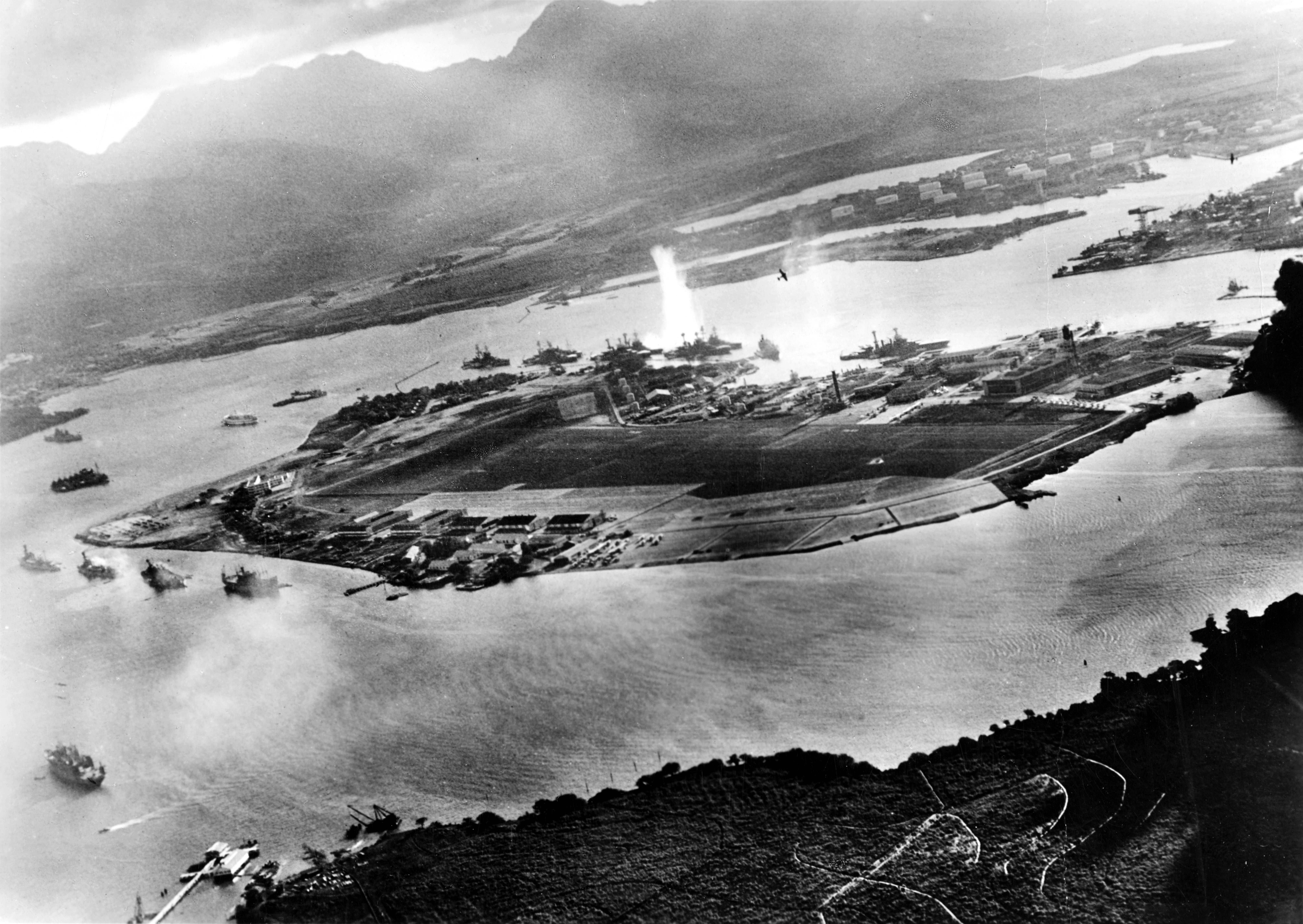 Aerial view of Pearl Harbor during the Japanese attack on December 7, 1941, showing explosions and smoke rising from battleships.
Aerial view of Pearl Harbor during the Japanese attack on December 7, 1941, showing explosions and smoke rising from battleships.
Key turning points began to emerge for the Allies in 1942 and 1943, shifting the momentum of the war. In the Pacific, the tide began to turn with critical naval engagements. The Coral Sea Battle (May 1942), fought entirely by aircraft from carriers, halted Japan's advance towards Australia and prevented the invasion of Port Moresby in New Guinea, marking the first time a Japanese invasion had been repelled. A month later, the Midway (June 1942) dealt a decisive and crippling blow to the Japanese navy, sinking four of its fleet aircraft carriers and crippling its offensive capabilities. This marked a profound shift in naval superiority to the Allies, particularly the United States, and effectively forced Japan onto the defensive for the remainder of the war. The grueling Guadalcanal (August 1942 - February 1943) saw the first major Allied land offensive against Japan, beginning the "island hopping" strategy. It demonstrated the fanatical Japanese resistance and the incredibly high casualty rates for both sides in brutal jungle warfare under extreme conditions, setting a precedent for future Pacific campaigns.
On the Eastern Front, after months of brutal urban warfare and immense casualties (millions for both sides), the Stalingrad (August 1942 - February 1943) halted the German advance deep into the Soviet Union and proved to be a strategic catastrophe for the Axis. This devastating defeat, which saw the encirclement and destruction of Germany's elite Sixth Army (around 800,000 Axis casualties), marked a definitive strategic turning point, forcing Germany onto the defensive and beginning its long, costly retreat from the Soviet Union. This battle showcased the immense human cost of the conflict, particularly on the Eastern Front, and the Soviet Union's pivotal role in breaking the German war machine. The Leningrad Siege, lasting an agonizing 872 days (September 1941 - January 1944), also exemplified the immense human cost and resilience on this front, with over a million civilian deaths from starvation and bombardment as the city clung desperately to survival. In July 1943, the Kursk, the largest tank battle in history involving thousands of tanks, decisively confirmed Soviet military superiority on the Eastern Front, inflicting another major defeat on Germany and effectively ending its ability to launch major strategic offensives in the East.
In North Africa, British forces under General Bernard Montgomery achieved decisive victories, notably at the Second Alamein in October 1942, pushing Axis forces westward across Libya and securing the Suez Canal. Concurrent with this, Torch saw large American and British forces land in French North Africa in November 1942, opening a second front against the Axis in the region. These successful campaigns culminated in the surrender of Axis forces in Tunisia in May 1943, eliminating the Axis threat to the vital Suez Canal and the oilfields of the Middle East, and paving the way for the invasion of Southern Europe. This cleared the Mediterranean for Allied shipping and released considerable forces for future offensives.
These Allied victories paved the way for the Sicily Invasion (Husky) in July 1943, followed by the invasion of mainland Italy in September 1944. The invasion led to the overthrow of Benito Mussolini and Italy's armistice with the Allies on September 8, 1943. However, fierce fighting continued in Italy for many more months against tenacious German forces who had occupied the country and established the formidable Gustav Line of defenses, notably at Monte Cassino, where Allied casualties were very high due to determined German defenses in difficult mountainous terrain. Throughout this period, the Allies (primarily comprising the United States, the United Kingdom, the Soviet Union, and China) began to gain the decisive upper hand, bolstered by their growing industrial output and coordinated Strategic Bombing campaigns against German cities and industries, aiming to cripple their war production and morale. Major Allied Conferences like Casablanca (January 1943) and Tehran (November 1943) formalized grand strategies, including the crucial commitment to opening a second front in Western Europe to relieve pressure on the Soviet Union and coordinate post-war plans, laying the groundwork for eventual victory.
1944-1945: Allied Advance and Victory
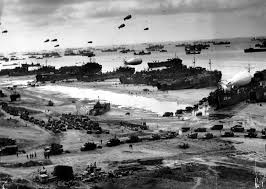 Allied landing craft and ships approaching the Normandy beaches on D-Day, June 6, 1944, marking the largest amphibious invasion in history.
Allied landing craft and ships approaching the Normandy beaches on D-Day, June 6, 1944, marking the largest amphibious invasion in history.
By 1944, the Allies were pushing on multiple fronts towards Germany and Japan, sensing ultimate victory. On June 6, 1944, D-Day marked the massive Normandy Landings (Overlord), the largest amphibious invasion in history. More than 150,000 Allied troops, primarily from the United States, United Kingdom, and Canada, landed on the beaches of Normandy, establishing a crucial second front in Western Europe. This operation, meticulously planned and executed with overwhelming air and naval support, led to the difficult but ultimately successful Normandy Battle, including key engagements like the devastating Falaise Pocket, where large German forces were encircled and largely destroyed. The successful breakout from Normandy led to the rapid advance of Allied forces and the jubilant liberation of Paris on August 25, 1944. The fighting in Normandy was extremely costly for all sides, with hundreds of thousands of casualties. Allied forces then advanced rapidly towards Germany, attempting a bold but ultimately unsuccessful airborne operation (Market Garden) in September 1944, aimed at seizing key bridges in the Netherlands to bypass the formidable Siegfried Line and hasten the end of the war, but it met fierce German resistance. Germany launched a final major counter-offensive in the Bulge Battle (Ardennes Offensive) in December 1944, hoping to split the Allied lines, capture the port of Antwerp, and negotiate a favorable peace. However, it was ultimately repelled by January 1945, at great cost to both sides (over 100,000 Allied casualties and similar numbers for Germany), exhausting Germany's last strategic reserves and paving the way for the final Allied push into Germany.
On the Eastern Front, Soviet forces launched massive and relentless offensives throughout 1944, demonstrating their numerical superiority, vastly improved tactical prowess, and overwhelming industrial capacity. Bagration in June-August 1944 devastated the German Army Group Center, shattering the German front line and driving them out of Belarus in one of Germany's greatest defeats of the war, incurring an estimated 400,000 Axis casualties. The Soviets continued their relentless push from the east, liberating Poland, Hungary, Romania, and Czechoslovakia, and advancing inexorably towards Berlin. By early 1945, the Vistula Oder brought them to within striking distance of the German capital, having inflicted further hundreds of thousands of casualties on the retreating and crumbling German forces. The Soviet advance was marked by immense destruction and widespread atrocities against civilian populations, a brutal reciprocal of the Nazi occupation that left a lasting scar on the region.
In the Pacific, the United States, alongside Allied forces (including Australians, New Zealanders, Canadians, and British), pursued an "Island Hopping" strategy, gradually closing in on Japan's home islands through a series of fierce and costly amphibious assaults. Key engagements included Guadalcanal (1942-1943), the Leyte Gulf (October 1944) in the Philippines (the largest naval battle in history), which crippled the remaining Japanese fleet and established Allied naval dominance, and the subsequent recapture of the Philippines after prolonged and costly fighting. As Allied forces reached the Japanese home islands, Japanese resistance intensified dramatically in brutal battles like Iwo Jima (February-March 1945) and Okinawa (April-June 1945). These battles saw unprecedented casualty rates for both sides, with Japanese defenders often fighting to the last man from fortified positions, employing desperate tactics like Banzai charges and Kamikaze suicide attacks. Allied forces (predominantly American) suffered hundreds of thousands of casualties, foreshadowing a potentially devastating and protracted invasion of Japan itself.
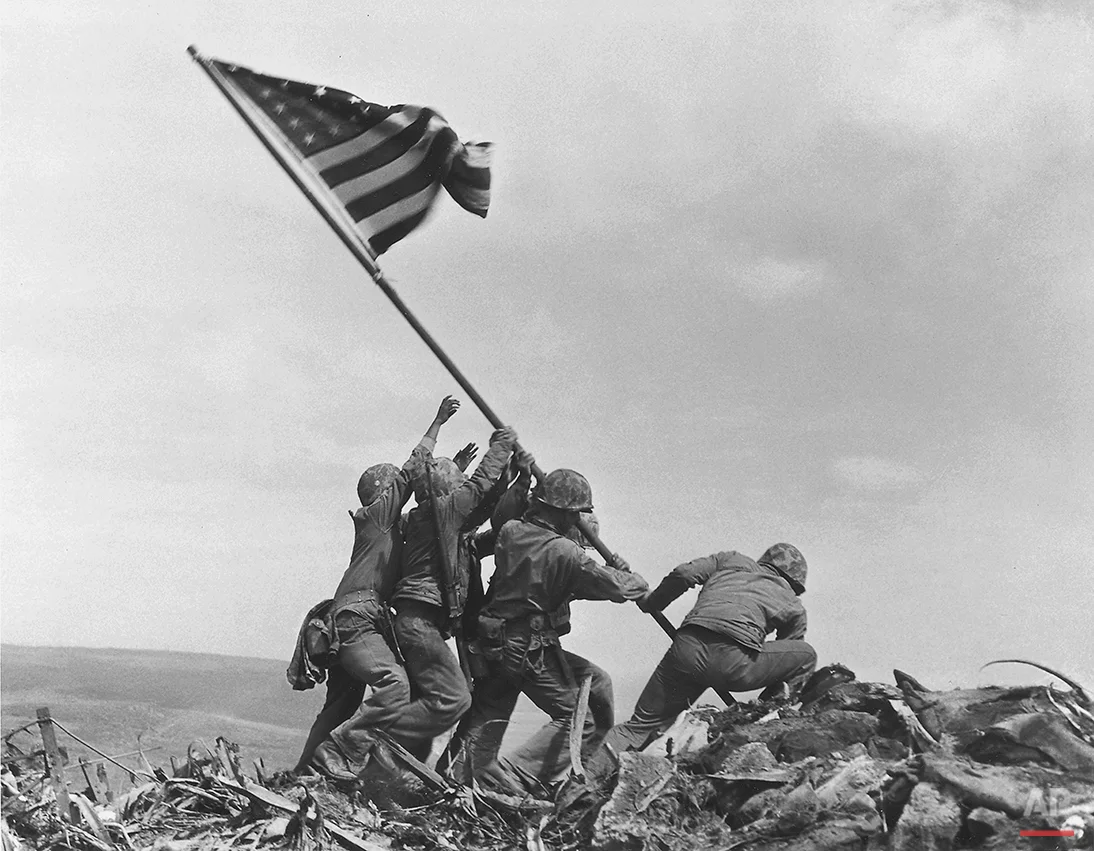 The iconic flag-raising on Mount Suribachi during the Battle of Iwo Jima, symbolizing American determination in the Pacific War.
Concurrent Firebombing by B-29 bombers ravaged Japanese cities, including the devastating raid on Tokyo in March 1945, which killed over 100,000 people and destroyed vast urban areas, demonstrating the immense destructive power of conventional air raids.
The iconic flag-raising on Mount Suribachi during the Battle of Iwo Jima, symbolizing American determination in the Pacific War.
Concurrent Firebombing by B-29 bombers ravaged Japanese cities, including the devastating raid on Tokyo in March 1945, which killed over 100,000 people and destroyed vast urban areas, demonstrating the immense destructive power of conventional air raids.
Wartime Innovations and Technology
World War II catalyzed unprecedented advancements in Military Technology and scientific innovation, profoundly reshaping warfare and laying the groundwork for the modern technological age. Key breakthroughs included the rapid development and widespread deployment of Radar and Sonar for detection and navigation, significantly impacting naval and air combat. Radar proved critical during the Battle of Britain by providing early warning of incoming Luftwaffe raids, enabling effective air defense, while sonar was essential for detecting German U-boats in the Atlantic Battle, dramatically improving convoy protection and turning the tide against the submarine threat. Aircraft Technology saw exponential progression, from piston-engine planes like the British Spitfire and American P-51 Mustang (which provided crucial long-range escort for bombers) to early Jet Aircraft (like Germany's Me 262 and Britain's Gloster Meteor) and sophisticated long-range strategic bombers such as the B-29 Superfortress, capable of carrying massive payloads across vast distances and revolutionizing aerial warfare tactics.
The war also saw the emergence of Rocketry as a military weapon, notably Germany's V-1 flying bomb (a pulsejet-powered cruise missile) and V-2 ballistic missile (the world's first long-range guided ballistic missile). These "vengeance weapons," despite limited military effectiveness against strategic targets, terrorized civilian populations in London and Antwerp and foreshadowed the Missile Age and the subsequent Space Race. Codebreaking efforts were paramount; the Allied decryption of German Enigma (Ultra intelligence, famously at Bletchley Park) and Japanese Purple codes (Magic intelligence) provided crucial intelligence advantage, allowing Allied commanders to anticipate enemy movements, significantly impacting Allied strategy and saving countless lives by directing forces away from known threats or towards vulnerable targets. The most transformative scientific achievement was the top-secret Manhattan Project, which led to the creation of the Atomic Bomb, ushering in the Nuclear Age and fundamentally altering global power dynamics forever by introducing weapons of mass destruction.
Beyond direct weaponry, wartime demands spurred advancements in numerous civilian sectors. Medicine saw rapid progress, including the discovery and mass production of Penicillin (a life-saving antibiotic that revolutionized infectious disease treatment and drastically reduced battlefield fatalities from infection), widespread blood storage and transfusion techniques, and improved surgical procedures, dramatically reducing combat mortality rates and saving countless lives. Communications technology advanced significantly with the development of more reliable radio systems and advancements in cryptography. Early forms of Computing also emerged, such as the Colossus computer developed in Britain to aid in codebreaking, laying foundational work for modern information technology. The scale of the conflict forced unprecedented levels of industrial organization and mass production, with the United States often termed the "Arsenal of Democracy" due to its immense manufacturing output that supplied the Allies with vast quantities of weapons, vehicles, and supplies. Logistics and transport systems were revolutionized to move vast quantities of troops and matériel across continents and oceans, from the Lend-Lease program to the development of massive cargo fleets, demonstrating a monumental mobilization of global resources and shaping post-war global trade.
The Home Front and Civilian Life
World War II was a "total war" that fundamentally transformed civilian life across belligerent nations, demanding unprecedented sacrifices and mobilization from entire populations. On the economic front, governments implemented strict Rationing of essential goods like food, fuel, and clothing to ensure military supply and fair distribution, often leading to innovative household practices and the growth of "victory gardens" to supplement diets. Industrial output skyrocketed, with factories retooling for war production, leading to full employment and a significant increase in the employment of Women in War. Millions of women entered the workforce in non-traditional roles, from ammunition factories to shipyards, challenging pre-war gender norms and contributing directly to the war effort (e.g., "Rosie the Riveter" in the United States).
Life under Air Raids and constant threat of bombardment became common in many cities, notably in Britain (the Blitz), Germany, and Japan, leading to the construction of Air Raid Shelters, mandatory blackouts, and the Child Evacuation of urban children to safer rural areas. Civil Defense organizations played crucial roles in firefighting, rescue efforts, and maintaining public order during attacks. Propaganda efforts by all sides were extensive, using posters, radio, and films to boost morale, demonize the enemy, encourage sacrifice, and justify the war. Censorship was also widespread, controlling information and maintaining national unity.
The war also created an immense Refugee Crisis. Millions were displaced by invasion, bombing, and systematic ethnic cleansing, particularly in Eastern Europe and Asia. These forced migrations, along with mass expulsions and population transfers in the immediate post-war period, drastically reshaped demographics and created immense humanitarian challenges. The psychological toll of constant warfare, loss, and separation impacted entire generations, with communities struggling to cope with the immense human suffering and disruption. Thousands of animals also played crucial roles, from pigeons delivering vital messages across battle lines to dogs used for detection and rescue, and millions of horses for transport, particularly on the Eastern Front.
Global Atrocities and Resistance
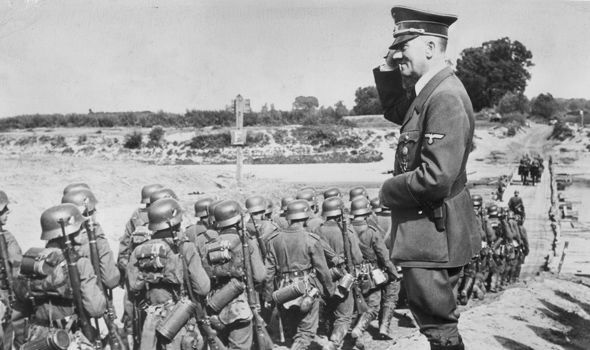 Adolf Hitler, the leader of Nazi Germany and architect of the Holocaust, salutes troops.
Adolf Hitler, the leader of Nazi Germany and architect of the Holocaust, salutes troops.
The scale of World War II's devastation extended far beyond the battlefields, encompassing systematic atrocities and widespread resistance against occupation, fundamentally altering the fabric of societies and exposing humanity's darkest capabilities. The most infamous was the Holocaust, the state-sponsored genocide perpetrated by Nazi Germany and its collaborators, which systematically murdered six million Jews across Europe through meticulously planned execution methods including gassing, mass shootings, and brutal forced labor in extermination camps. Millions of others were also targeted for extermination or enslavement, including Roma (known as the Porajmos), Poles, Soviet POWs, homosexuals, disabled people, and political opponents, in a vast network of Concentration Camps and Extermination Camps like Auschwitz, Treblinka, and Sobibor. Germany also implemented Generalplan Ost, a brutal plan for ethnic cleansing and colonization in Eastern Europe, leading to the deaths of millions more Slavs and other ethnic groups deemed "undesirable" or "inferior" through starvation, forced displacement, and mass killings to make way for German settlement. These policies were rooted in a pseudo-scientific racial ideology that deemed certain groups subhuman, justifying their annihilation.
In Asia, Imperial Japan committed widespread atrocities against civilian populations and prisoners of war, particularly in China and other occupied territories. Notorious examples include the horrific Nanking Massacre (1937), where hundreds of thousands of Chinese civilians and disarmed soldiers were systematically raped, tortured, and murdered with extreme brutality. Other atrocities included the brutal Bataan Death March in the Philippines, involving thousands of deaths of Allied POWs due to starvation, disease, and abuse, and the forced labor of millions across its conquered territories, including the construction of the Burma Railway under inhumane conditions. The Japanese military also engaged in the widespread use of "comfort women," sexual slaves forced into prostitution for the military, and horrific human experimentation conducted by units such as Unit 731, which performed biological warfare research on live subjects, resulting in thousands of deaths. These actions, often driven by extreme nationalism and a belief in Japanese racial superiority, left deep scars on East and Southeast Asia.
Across occupied Europe and Asia, Axis rule was frequently met with fierce Resistance movements engaging in guerrilla warfare, sabotage, intelligence gathering, and propaganda. These movements operated secretly, often at immense personal risk and with severe reprisals against civilians, employing various tactics from passive non-cooperation to active armed struggle. They provided vital support to the Allies, including intelligence on troop movements and industrial targets, rescue of downed airmen, and disruption of Axis supply lines. Notable examples include the French Resistance, which aided Allied intelligence and prepared for D-Day; the Polish Home Army, which launched the Warsaw Uprising in 1944 in a desperate but ultimately unsuccessful bid for self-liberation, resulting in the city's near-total destruction; the highly effective Yugoslav Partisans under Josip Broz Tito, who liberated much of Yugoslavia themselves through tenacious guerrilla warfare; and various anti-Japanese movements in China, Korea, and Southeast Asia, which tied down hundreds of thousands of Japanese troops. These widespread efforts highlighted the enduring human spirit in the face of tyranny and contributed significantly to the Allied victory by diverting Axis resources and morale, often serving as rallying points for national identity.
The End of the War
The war in Europe concluded with Germany's unconditional surrender on May 8, 1945 (V-E Day), following the suicide of Adolf Hitler in his Berlin bunker on April 30, 1945, and the fall of Berlin to Soviet forces after the climactic Berlin Battle on May 2, 1945. This final battle for the German capital was immensely destructive, resulting in hundreds of thousands of casualties (both military and civilian) and the complete devastation of the city, symbolizing the brutal end of Nazi Germany. The final weeks saw a desperate struggle as Soviet forces encircled the capital, while Western Allied forces rapidly advanced from the west, linking up with Soviet troops at the Elbe River, marking the symbolic meeting of East and West.
The war in the Pacific continued for several more agonizing months. Despite immense losses and a relentless Allied advance that had brought bombers within range of Japan's home islands, Japan showed no signs of unconditional surrender. Its military leaders were prepared for a fanatical, suicidal defense of the home islands (envisioning a "fight to the last man"), anticipating potentially millions of casualties for both sides in a full invasion (Downfall). To compel Japan's surrender and avoid this projected costly, protracted invasion of the Japanese mainland, the United States, after issuing the Potsdam Declaration ultimatum on July 26, 1945 (calling for Japan's unconditional surrender or "prompt and utter destruction"), deployed its new and terrifying atomic weapons. The United States dropped Atomic Bombs on the cities of Hiroshima on August 6, 1945, and Nagasaki on August 9, 1944, causing immediate and widespread devastation, vaporizing entire city districts, and causing tens of thousands of deaths in each city, followed by long-term radiation sickness and horrific injuries. The decision to use these weapons remains one of the most controversial in history, debated against the backdrop of an estimated million potential Allied casualties in a conventional invasion and the desire to end the war swiftly and save lives.
Simultaneously, the Soviet Union declared war on Japan on August 9, 1945, honoring its commitment to the Allies made at the Yalta Conference. It swiftly launched the Soviet Manchuria (Operation August Storm), rapidly overwhelming Japanese forces in China and Korea and inflicting heavy casualties, effectively ending Japan's last hopes for a negotiated peace through Soviet mediation. Faced with this overwhelming military pressure from two fronts, the unprecedented destructive power of the atomic bombs, and the Soviet entry into the war, Japan's Emperor Hirohito intervened to break a deadlock in the Japanese War Council, arguing that continuing the war would only lead to the destruction of the nation. Japan officially surrendered on August 15, 1945 (V-J Day in the West, when Emperor Hirohito announced the surrender), and signed the instrument of surrender aboard the USS Missouri in Tokyo Bay on September 2, 1945, bringing a definitive end to the most destructive conflict in human history.
Impact of World War Two
The devastating conflict fundamentally altered the geopolitical landscape of the entire world. It led to the rapid decline of European Colonial Empires, which were economically exhausted and morally discredited by the war, accelerating the swift process of Decolonization across Asia and Africa in the decades that followed, as formerly subjugated peoples sought self-determination. The war's end saw the definitive rise of the United States and the Soviet Union as rival global superpowers, leading directly to the ideological and geopolitical struggle of the Cold War, which divided much of the world into Western (capitalist) and Eastern (communist) blocs, characterized by the symbolic "Iron Curtain" and a dangerous nuclear arms race. Post-war efforts in Europe included the massive Marshall Plan (European Recovery Program) initiated by the US, providing billions of dollars in aid to rebuild war-torn economies, prevent widespread famine, and counter the appeal of communism, thereby stabilizing Western Europe. Germany itself was divided into four occupation zones (American, British, French, and Soviet) controlled by the Allies, which eventually led to the formation of East Germany (Soviet-aligned) and West Germany in 1949, remaining divided until 1990, a stark symbol of the Cold War divide.
 Map showing the Allied occupation zones in Germany after WWII (1945)
Map showing the Allied occupation zones in Germany after WWII (1945)
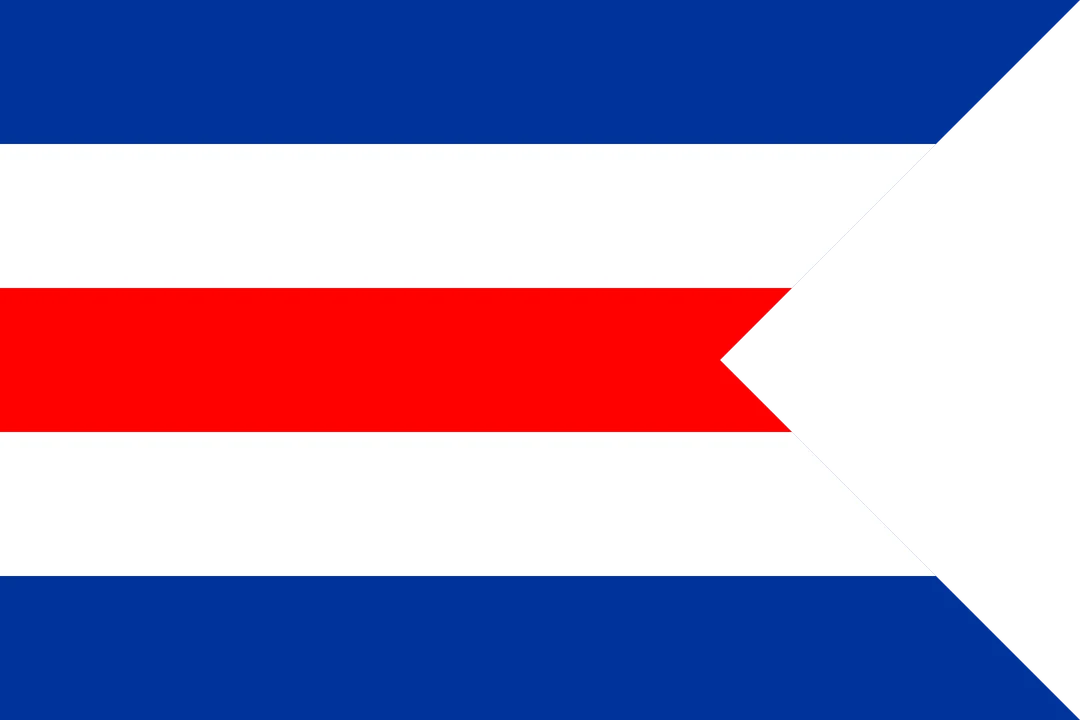 Flag of the Allied Control Council for Germany, 1946-1949, used during the Allied occupation.
Flag of the Allied Control Council for Germany, 1946-1949, used during the Allied occupation.
The overwhelming human cost and the desperate need to prevent future global conflicts led to the creation of international bodies like the United Nations in 1945, designed to foster international cooperation, maintain peace, and protect human rights through diplomacy and collective security, establishing a new framework for global governance. The war also spurred incredible technological advancements with profound civilian applications, from Radar, Jet Aircraft, and Rockets (laying the groundwork for space exploration) to the development of early Computers and, most profoundly, Nuclear Weapons, which ushered in an era of existential threat but also strategic deterrence. The scale of atrocities like the Holocaust led to the establishment of War Crimes Trials at Nuremberg Trials for Nazi leaders and at Tokyo Trials for Japanese war criminals, setting crucial precedents for international law, justice, and accountability for crimes against humanity. Socially, the war profoundly impacted civilian populations worldwide, brought women into the workforce in unprecedented numbers, challenged existing social hierarchies, and accelerated social and cultural changes globally, including advancements in civil rights for minorities who had served. Its lasting influence on international relations, the dawn of the nuclear age, and its enduring lessons about humanity's capacity for both immense destruction and extraordinary resilience continue to shape global consciousness and policies to this day.
Key Participants
During World War II, nations aligned primarily with one of two major military alliances, or maintained a stance of neutrality, though neutrality often came under immense pressure and could be precarious. This section outlines the major participants and their affiliations, detailing their roles and contributions.
Axis Powers
The primary Axis Powers, who formed the core of the alliance based on shared revisionist aims, expansionist ideologies, and a desire to overturn the post-WWI international order, were:
- Germany (entered Sept 1, 1939) - Key Role: Under the fanatical leadership of Adolf Hitler and the Nazi Party, Germany initiated the war in Europe with expansionist and genocidal aims, seeking to establish a vast German empire (the "Third Reich") and achieve racial purity through conquest. It pursued a total war strategy, was the primary combatant on the Eastern and Western Fronts, and directly responsible for the systematic genocide of the Holocaust. Its highly mechanized and tactically innovative military (Wehrmacht) and ideological fervor drove much of the conflict in Europe, achieving early stunning victories across the continent.
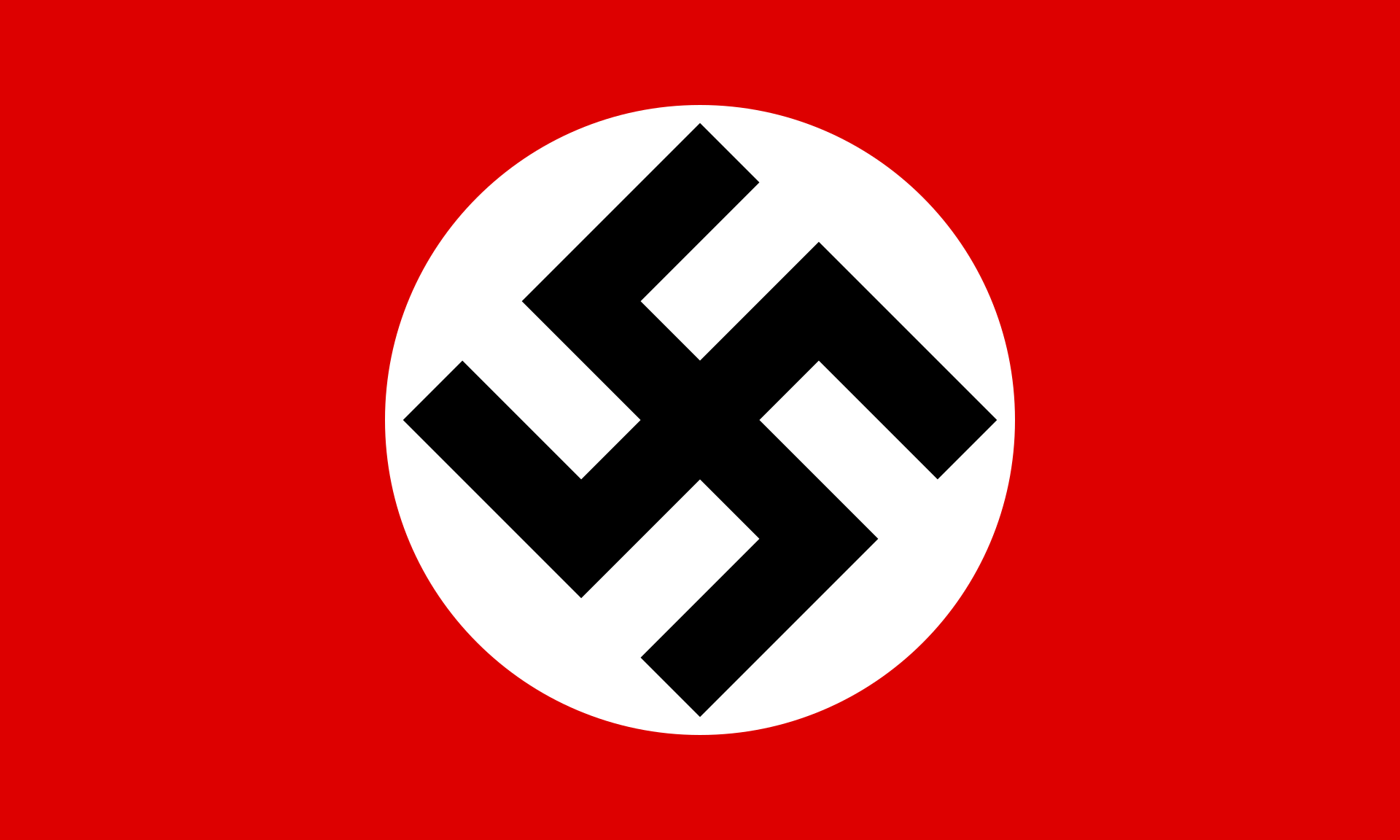 National flag of Nazi Germany, 1935-1945
National flag of Nazi Germany, 1935-1945
 War ensign (Reichskriegsflagge) of Nazi Germany, 1935-1945
War ensign (Reichskriegsflagge) of Nazi Germany, 1935-1945
 Flag of the Allied Control Council for Germany, 1946-1949, representing Allied occupation after the war.
Flag of the Allied Control Council for Germany, 1946-1949, representing Allied occupation after the war. - Italy (entered June 10, 1940) - Key Role: Under the fascist dictator Benito Mussolini, Italy sought to establish a new Roman Empire, launching invasions in East Africa (Ethiopia), the Balkans (Albania, Greece), and North Africa. Despite ambitious territorial claims and a modern navy, its military often struggled with logistics, equipment, and leadership, requiring significant German support to prop up its faltering campaigns. Mussolini's regime eventually collapsed in 1943 following Allied invasions, leading to Italy's armistice with the Allies and subsequent German occupation of the north, where fighting continued as a bitter civil war against Allied forces and Italian partisans.
- Japan (major expansion Dec 7, 1941; at war with China from July 7, 1937) - Key Role: A dominant imperial power in East Asia, Japan's militarist government aimed to establish a "Greater East Asia Co-Prosperity Sphere" through military force to secure resources and regional hegemony. Its brutal war against China began in 1937, and its surprise attack on Pearl Harbor brought the United States into WWII, leading to rapid conquests across Southeast Asia and the Pacific. Japanese forces were known for their fanatical resistance, often fighting to the last man, and for committing widespread atrocities against civilian populations and prisoners of war, including forced labor and sexual slavery. Its technological advancements in naval aviation and powerful fleet aircraft carriers allowed for early dominance in the Pacific.
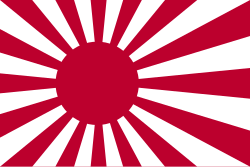 A prominent symbol of Imperial Japan's military during World War II.
A prominent symbol of Imperial Japan's military during World War II.
 Flag for Occupied Japan.
Flag for Occupied Japan.
Other Axis Members and Co-belligerents
These nations formally joined the Axis, were puppet states, or were co-belligerent (allied for specific strategic reasons) with the Axis powers, often seeking territorial gains, protection from the Soviet Union, or ideological alignment.
- Hungary (joined Nov 20, 1940) - Governed by Regent Miklós Horthy, Hungary contributed significant forces to the Eastern Front, particularly against the Soviet Union, hoping to regain territories lost after WWI and suppress communist influence.
- Romania (joined Nov 23, 1940) - Under dictator Ion Antonescu, Romania was a crucial supplier of oil to Germany and sent substantial armies to the Eastern Front, participating heavily in operations like the Battle of Stalingrad, seeking to reclaim Bessarabia and Northern Bukovina from the USSR, and engaged in brutal anti-Semitic policies.
- Bulgaria (joined Mar 1, 1941) - While formally joining the Tripartite Pact, Bulgaria largely limited its military action to occupying parts of Greece and Yugoslavia, and notably did not declare war on or send troops to fight the Soviet Union, largely due to strong pro-Russian sentiment among its populace, an unusual position within the Axis.
- Finland (co-belligerent against USSR from June 25, 1941) - Fought alongside Germany against the Soviet Union in the "Continuation War" (1941-1944), primarily to recover territories lost in the 1939-1940 Winter War. Finland maintained its democratic institutions and generally did not share Nazi Germany's ideological goals, but was a military ally against a common enemy.
- Slovakia (puppet state from 1939) - A client state of Germany under President Jozef Tiso, it participated in the invasion of Poland and contributed troops to the Eastern Front, also implementing anti-Jewish laws.
- Croatia (Independent State of Croatia, puppet state from 1941) - A fascist puppet state established after the invasion of Yugoslavia, it was known for its extreme ultranationalist and genocidal policies against Serbs, Jews, Roma, and Croat anti-fascists under the Ustaše regime, operating its own concentration camps.
Major Puppet States and Collaborationist Regimes
These states were typically controlled by or collaborated closely with the Axis powers, serving their strategic and ideological goals while often maintaining a semblance of autonomy.
- Vichy France (collaborationist regime after June 1940, aligned with Axis) - Governed by Marshal Philippe Pétain, it controlled the unoccupied southern part of France and its colonial empire, collaborating with Nazi Germany while maintaining nominal sovereignty until 1942, when Germany occupied the entire country following Allied landings in North Africa.
- Manchukuo (Japanese puppet state in Manchuria, established 1932) - Created by Japan after its invasion of Manchuria, it served as a resource base and strategic buffer, ruled by a puppet emperor, Puyi, the last emperor of China, and exploited for its natural resources.
- Other notable examples include puppet governments in Norway (Quisling regime), the Netherlands, and various Baltic states under German occupation, which often facilitated Axis occupation policies and actively participated in the persecution of local populations.
Allied Powers
The primary Allied Powers, who coalesced into a diverse but united front against Axis aggression, representing a broad coalition of ideologies and interests, were:
- United Kingdom (entered Sept 3, 1939) - Key Role: Under Winston Churchill, Britain stood alone against Germany after the fall of France, proving resilient in the Battle of Britain and playing a crucial role in the Battle of the Atlantic. It participated in all major European, African, and Asian campaigns, leveraging its global empire and naval power, providing a base for Allied operations and leadership in the Western Allied effort. Its colonial resources and industrial capacity were vital for sustaining the war effort.
- France (entered Sept 3, 1939; Free France continued resistance after June 1940) - Key Role: Fought valiantly but fell to Germany early in 1940. However, the Free French forces, led by General Charles de Gaulle, and a robust domestic resistance movement continued to fight, contributing significantly to Allied intelligence and later participating in the liberation of France and the final push into Germany, reasserting French sovereignty and upholding French national honor.
- Poland (entered Sept 1, 1933) - Key Role: The first country invaded by Germany, its government-in-exile and armed forces (both regular units serving with the Allies, such as the Polish Air Force in the Battle of Britain, and a powerful resistance movement, the Home Army) fought throughout the war, making significant contributions despite immense suffering under Axis occupation and the tragic loss of millions of its citizens, maintaining a continuous military presence on multiple fronts.
- Australia (entered Sept 3, 1939) - Key Role: As part of the British Commonwealth, Australia provided significant forces to various theaters, including North Africa, the Mediterranean, and particularly in the defense against Japanese expansion in the Pacific, playing a critical role in battles like El Alamein and Guadalcanal, and defending its own territories from Japanese threats. Its resource contributions were also substantial.
- New Zealand (entered Sept 3, 1939) - Key Role: Also a Commonwealth nation, New Zealand contributed forces primarily to the Mediterranean and Pacific theaters, fighting alongside British and American troops, often distinguishing themselves in major engagements, particularly in North Africa and Italy, and contributing naval assets. The Maori Battalion earned particular renown for its bravery.
- Canada (entered Sept 10, 1939) - Key Role: Provided significant naval, air, and ground forces, playing a crucial role in the Battle of the Atlantic, the strategic bombing campaign over Germany, and the invasion of Normandy (Juno Beach). Canada also supplied vital resources and industrial output, becoming a key industrial contributor to the Allied war effort, embodying the concept of the "British Commonwealth Air Training Plan."
- South Africa (entered Sept 6, 1939) - Key Role: Contributed forces to the North African and Italian campaigns, primarily focused on fighting Italian and German forces in Africa, and supplied strategic minerals, overcoming internal political divisions to join the Allied cause. Its troops were instrumental in the East African campaign.
- Soviet Union (entered June 22, 1941) - Key Role: Under Joseph Stalin, the Soviet Union bore the overwhelming brunt of the German ground war on the Eastern Front, mobilizing immense human and industrial resources. It inflicted the vast majority of German casualties and was pivotal in the defeat of Nazi Germany, at the cost of tens of millions of lives, demonstrating unparalleled resilience and sacrifice, profoundly shaping the post-war world. Its strategic depth and ability to relocate industries eastward were critical to its survival.
- United States (entered Dec 8, 1941) - Key Role: Following the attack on Pearl Harbor, the United States mobilized its vast industrial and military power, becoming the "Arsenal of Democracy." It was crucial in both the Pacific War against Japan and the Western Front in Europe, providing decisive military and economic aid (through Lend-Lease) to its allies, and eventually deploying the atomic bomb to end the war, emerging as a dominant global superpower. Its unmatched industrial output proved to be a decisive factor in the Allied victory.
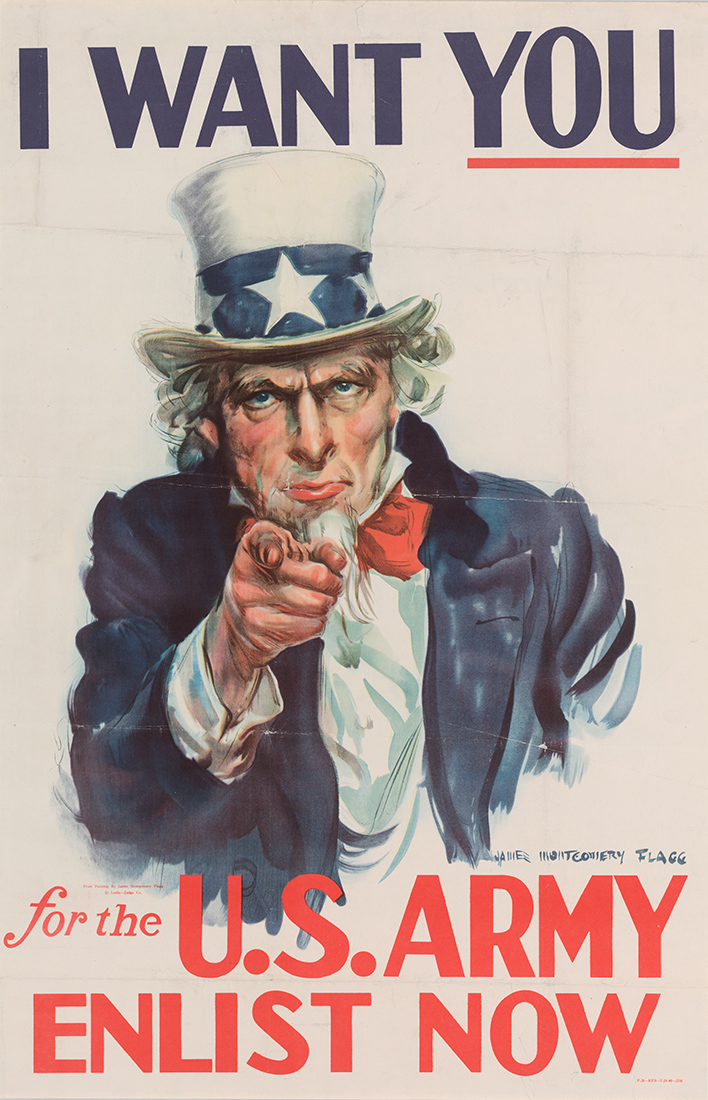 The iconic Uncle Sam "I Want You" Recruitment poster, symbolizing United States wartime mobilization and Propaganda.
The iconic Uncle Sam "I Want You" Recruitment poster, symbolizing United States wartime mobilization and Propaganda. - China (at war with Japan from July 7, 1937) - Key Role: Fought a prolonged and incredibly costly war against Japan from 1937, tying down vast numbers of Japanese troops in the Chinese theater, thus preventing their deployment elsewhere. Despite immense suffering and internal divisions, China remained a crucial early Allied combatant, draining Japanese resources and resisting brutal occupation. Its resilience bought valuable time for other Allied powers. Other major Allied nations included: Yugoslavia, Greece, Netherlands, Belgium, Norway, and Czechoslovakia, most of which were invaded by Axis forces in 1940-1941 and continued to fight with governments-in-exile and active resistance movements, providing moral and military support.
Major Colonies and Dependencies
These territories were under the control of Allied powers and significantly contributed to the war effort through manpower, resources, and strategic locations, despite often being denied full political autonomy.
- British India (contributed immense resources and manpower to the British war effort, with over 2.5 million volunteers, the largest volunteer army in history, fighting in North Africa, Italy, and Southeast Asia)
- Other colonial territories of the British Empire (e.g., Caribbean, African colonies), French Empire (e.g., French North Africa, Indochina), and Netherlands East Indies (crucial for oil and rubber, later occupied by Japan). Their resources and strategic locations were vital to the Allied war effort, though their populations often faced severe hardship and repression under colonial rule, and their contributions often fueled nascent independence movements, changing the post-war global order.
Neutral Nations
Several nations managed to remain officially neutral throughout the conflict, often navigating delicate diplomatic balances and making concessions to powerful belligerents to preserve their sovereignty, sometimes under threat of invasion.
- Switzerland - Maintained armed neutrality, protecting its borders and serving as a financial hub and a refuge for diplomats and refugees, though its neutrality was often criticized for its dealings with Nazi Germany and its financial practices. Its formidable mountain defenses deterred invasion.
- Sweden - Maintained neutrality, but made economic concessions to both sides, notably supplying Germany with vital iron ore and allowing German troop transit early in the war, later shifting towards Allied sympathy and providing humanitarian aid.
- Spain - Remained officially neutral under Francisco Franco's fascist regime, though ideologically sympathetic to the Axis and provided some material support (e.g., the Blue Division on the Eastern Front). Its neutrality was partly due to exhaustion from its own civil war and strategic calculations.
- Portugal - Maintained neutrality under António de Oliveira Salazar, but allowed the Allies to use bases in the Azores late in the war, providing crucial Atlantic resupply points, carefully balancing relations with both sides and benefiting from its long-standing alliance with Britain.
- Turkey - Maintained neutrality for most of the war, strategically positioned between the Axis and the Soviet Union, though it eventually declared war on Germany in February 1945, largely symbolically, to gain an advantage in the post-war order and avoid isolation.
- Ireland - Maintained strict neutrality (referred to as "The Emergency"), leading to some tensions with the United Kingdom, particularly regarding access to naval bases, and an isolationist stance that persisted throughout the conflict, despite offering covert assistance to downed Allied airmen.
All Battles
The conflict was defined by numerous pivotal battles across various theaters, each with profound impacts on the war's progression and ultimate outcome. These engagements spanned land, sea, and air, showcasing diverse tactics and unparalleled human suffering.
- Manchuria Invasion (September 1931): Initiated by Japan, this invasion of China's resource-rich Manchuria established the puppet state of Manchukuo and is often considered the start of WWII in Asia, highlighting the failure of international diplomacy and the League of Nations to curb aggression. It demonstrated Japan's expansionist ambitions and its disregard for international law.
- Ethiopia Invasion (October 1935): Italy's aggressive invasion of Ethiopia, an independent African nation, showcased the League of Nations's ineffectiveness in preventing aggression and emboldened other expansionist powers like Germany and Japan, demonstrating the limitations of collective security without military enforcement. This conquest provided a sense of imperial achievement for Mussolini's regime.
- Sino-Japanese War (July 1937): Initiated by Japan's full-scale invasion of China, this brutal conflict involved widespread atrocities and tied up significant Japanese military resources for years, effectively becoming the first major theater of the global war and significantly weakening China's ability to defend itself. It was characterized by immense civilian suffering and scorched-earth tactics.
 German tanks and infantry advancing, illustrating the early stages of the Poland Invasion in September 1939, which officially began World War II.
German tanks and infantry advancing, illustrating the early stages of the Poland Invasion in September 1939, which officially began World War II. - Poland Invasion (September 1939): The German Blitzkrieg invasion of Poland on September 1, 1939, initiated WWII in Europe, leading to declarations of war by France and the United Kingdom. The Soviet Union also invaded from the east on September 17, crushing remaining Polish resistance under the Molotov-Ribbentrop Pact, effectively ending Polish independence. This invasion demonstrated the devastating effectiveness of modern combined-arms warfare.
- Atlantic Battle (September 1939 – May 1945): An ongoing naval struggle initiated by German U-boats against Allied convoys, primarily the United Kingdom and United States for control of vital shipping lanes. It was essential for Britain's survival and a costly struggle for both sides, employing convoy systems, escort carriers, and advanced sonar technology to counter the submarine threat. This battle was a continuous war of attrition, with the Allies ultimately prevailing through technological and tactical superiority.
- Norway Invasion and Norway Denmark Invasion (Weserubung, April 1940): Launched by Germany, these swift invasions secured vital iron ore supplies from Sweden and strategic naval bases for the Axis on the North Sea coast, significantly improving Germany's strategic position for the Battle of the Atlantic. They demonstrated Germany's capacity for rapid, daring offensives beyond its immediate borders.
- France Battle (May – June 1940): A swift German invasion of France and the Low Countries (Netherlands, Belgium, Luxembourg) by Germany, famously bypassing the Maginot Line through the Ardennes, resulting in the fall of France within six weeks and the miraculous evacuation of Allied forces from Dunkirk. French military casualties were high, and the defeat was a profound psychological shock. This battle showcased the failure of static defensive doctrines against mobile warfare.
- Battle of Britain (July – October 1940): An aerial campaign initiated by Germany (Luftwaffe) against the United Kingdom (RAF) over British airspace. It resulted in thousands of military casualties and tens of thousands of civilian deaths, with the RAF successfully defending Britain and preventing a German invasion (Operation Sea Lion), marking Hitler's first major strategic defeat and demonstrating the power of air defense. It was a crucial turning point, proving the Luftwaffe was not invincible.
- Balkans Campaign (April 1941): Initiated by Germany, this swift campaign conquered Yugoslavia and Greece, securing Germany's southern flank and assisting Italy after its initial setbacks, while also diverting German resources and delaying Operation Barbarossa. These campaigns highlighted the fragility of smaller nations against the German war machine.
- Barbarossa (June 1941): The massive, surprise invasion of the Soviet Union by Germany (June 22, 1941), opening the brutal Eastern Front. German forces made rapid advances, inflicting millions of casualties, but were eventually halted by fierce Soviet resistance and harsh winter conditions at the gates of Moscow, fundamentally altering the course of the European war. This invasion ignited the deadliest theater of the war.
- Leningrad Siege (September 1941 – January 1944): A prolonged and devastating German siege of the Soviet city of Leningrad, lasting 872 days and resulting in over a million civilian deaths from starvation and bombardment, demonstrating immense human cost and resilience under extreme conditions and becoming a symbol of Soviet suffering. The city's survival was a testament to Soviet resolve.
- Moscow Battle (October 1941 – January 1942): Germany's attempted capture of the Soviet capital was repelled by the Soviet Union in a crucial defensive victory, marking the first major setback for the Wehrmacht on the Eastern Front and signaling a prolonged war that Germany was ill-prepared for. The harsh Russian winter played a significant role in halting the German advance.
- Pearl Harbor (December 7, 1941): A surprise aerial attack by Japan on the U.S. naval base at Pearl Harbor, Hawaii, designed to cripple the United States Pacific Fleet. It led directly to the United States' entry into WWII on December 8, 1941, irrevocably globalizing the conflict. While militarily successful for Japan, it united American public opinion for war.
- Singapore (February 1942): A swift and decisive Japanese victory over British forces, leading to the largest British surrender in history and marking a critical moment in Japan's early expansion in Southeast Asia, demonstrating the vulnerability of colonial strongholds. Its fall opened the door for further Japanese conquests in the region.
- Coral Sea Battle (May 1942): Initiated by Japan's advance towards Australia, this naval battle, fought entirely by aircraft carriers of Japan and the United States, halted Japan's expansion and was the first carrier-versus-carrier battle in history, preventing the invasion of Port Moresby. It was a strategic, if not tactical, victory for the Allies.
- Midway (June 4–7, 1942): A decisive naval battle in the Pacific initiated by Japan's offensive against the United States. It inflicted a crippling blow to the Japanese Imperial Navy, with approximately 3,300 military casualties and the loss of four aircraft carriers, turning the tide of the Pacific War decisively. This battle permanently shifted the naval balance of power in the Pacific.
- Guadalcanal (August 1942 – February 1943): The first major Allied land offensive, initiated by the United States against Japan in the Pacific War. It initiated the "island hopping" strategy and saw incredibly high casualty rates for both sides in brutal jungle warfare, marking the start of a grinding campaign. This was a crucial test of the Allied resolve in the Pacific.
- Stalingrad (August 1942 – February 1943): A brutal and prolonged urban battle on the Eastern Front initiated by Germany's offensive against the Soviet Union. Spanning over five months, it is considered one of the deadliest battles in history, with an estimated 2 million total casualties, marking a strategic turning point against Germany and the beginning of its long retreat. It broke the back of the Wehrmacht's offensive capability in the East.
- Second Alamein (October 1942): A decisive offensive initiated by British forces under General Montgomery against Axis forces (Germany, Italy) in North Africa, pushing them westward and eliminating the threat to the vital Suez Canal, securing Allied control of the region. This victory marked the end of Axis hopes for controlling North Africa.
- Torch (November 1942): Launched by the United States and United Kingdom, this major amphibious landing in North Africa opened a crucial second front against Axis forces (Germany, Italy) in the region, leading to their eventual surrender in Tunisia and paving the way for the invasion of Italy. It was the first major engagement for American ground forces in the European theater.
- Kursk (July 1943): The largest tank battle in history (July 1943), initiated by Germany's offensive against the Soviet Union on the Eastern Front. It decisively confirmed Soviet military superiority and ended Germany's ability to launch major strategic offensives in the East, sealing its fate on that front. This colossal clash of armor definitively shifted the strategic initiative to the Red Army.
- Sicily Invasion (Husky) (July – August 1943): Initiated by the Allies (United States, United Kingdom, Canada) against Axis forces (Germany, Italy), this invasion led to the overthrow of Mussolini and paved the way for the invasion of mainland Italy, shifting the war to Southern Europe. It led to Italy's withdrawal from the Axis, though fighting continued against German forces.
- Monte Cassino (January – May 1944): A series of four costly Allied offensives, primarily by the United States, United Kingdom, Poland, France and others against determined German defenses in Italy, which eventually broke the Gustav Line and opened the road to Rome, but at a very high price in casualties. This battle exemplified the brutal static warfare encountered in the Italian campaign.
- Normandy Landings and Normandy Battle (June – August 1944): The largest amphibious invasion in history, launched by the United States, United Kingdom, Canada, Free France, and Poland against German forces in Normandy, France. This campaign established the Western Front, leading to the liberation of France and a critical step towards Germany. D-Day was a monumental logistical and military achievement.
- Bagration (June – August 1944): A massive Soviet offensive against Germany on the Eastern Front, which devastated Army Group Center and led to the liberation of Belarus in one of Germany's greatest defeats, effectively shattering Germany's eastern defenses. It showcased the Red Army's improved operational capabilities and overwhelming numerical superiority.
- Warsaw Uprising (August – October 1944): Launched by the Polish Home Army against German occupation, this desperate but ultimately unsuccessful attempt to liberate Warsaw resulted in immense destruction and civilian casualties, with little Soviet assistance, a tragic testament to Polish resistance. The deliberate destruction of Warsaw was a Nazi reprisal.
- Leyte Gulf (October 1944): The largest naval battle in history (October 1944), fought between the United States and Japan in the Philippines. It crippled the remaining Japanese fleet and secured Allied naval dominance in the Pacific, paving the way for the recapture of the Philippines. This battle effectively eliminated the Imperial Japanese Navy as an offensive force.
- Bulge Battle (December 1944 – January 1945): Germany's final major counter-offensive on the Western Front against United States and Allied forces. It was ultimately repelled at great cost, exhausting Germany's last strategic reserves, leading to the final collapse on the Western Front and the imminent invasion of Germany. Hitler's desperate gamble failed, further weakening the Wehrmacht.
- Iwo Jima (February – March 1945): A brutal amphibious assault initiated by the United States against fanatically defending Japanese forces, characterized by extremely high casualty rates and close-quarters fighting in caves and bunkers, as the Allies closed in on Japan's home islands, setting a grim precedent. The iconic flag-raising photo symbolized American determination.
- Okinawa (April – June 1945): One of the final and most intense battles of the Pacific War, initiated by the United States (with Allied support) against Japan for control of the island of Okinawa. It resulted in hundreds of thousands of military and civilian casualties, highlighting the fanatical Japanese resistance and the anticipated horrors of a mainland invasion. The high casualties influenced the decision to use atomic bombs.
- Berlin Battle (April – May 1945): The final major offensive of the European War, with Soviet Union forces capturing the German capital of Berlin. It resulted in hundreds of thousands of casualties and the complete devastation of the city, culminating in Hitler's suicide and Germany's surrender, marking the end of Nazi Germany. The symbolic fall of Berlin signified the collapse of the Third Reich.
- Soviet Manchuria (Operation August Storm, August 1945): Initiated by the Soviet Union against Japan in the final days of the war, this swift and decisive campaign rapidly overwhelmed Japanese forces in Manchuria and Korea, greatly contributing to Japan's decision to surrender by eliminating its last hopes for a negotiated peace. This surprise attack caught the Japanese Kwantung Army off guard.
Mini facts
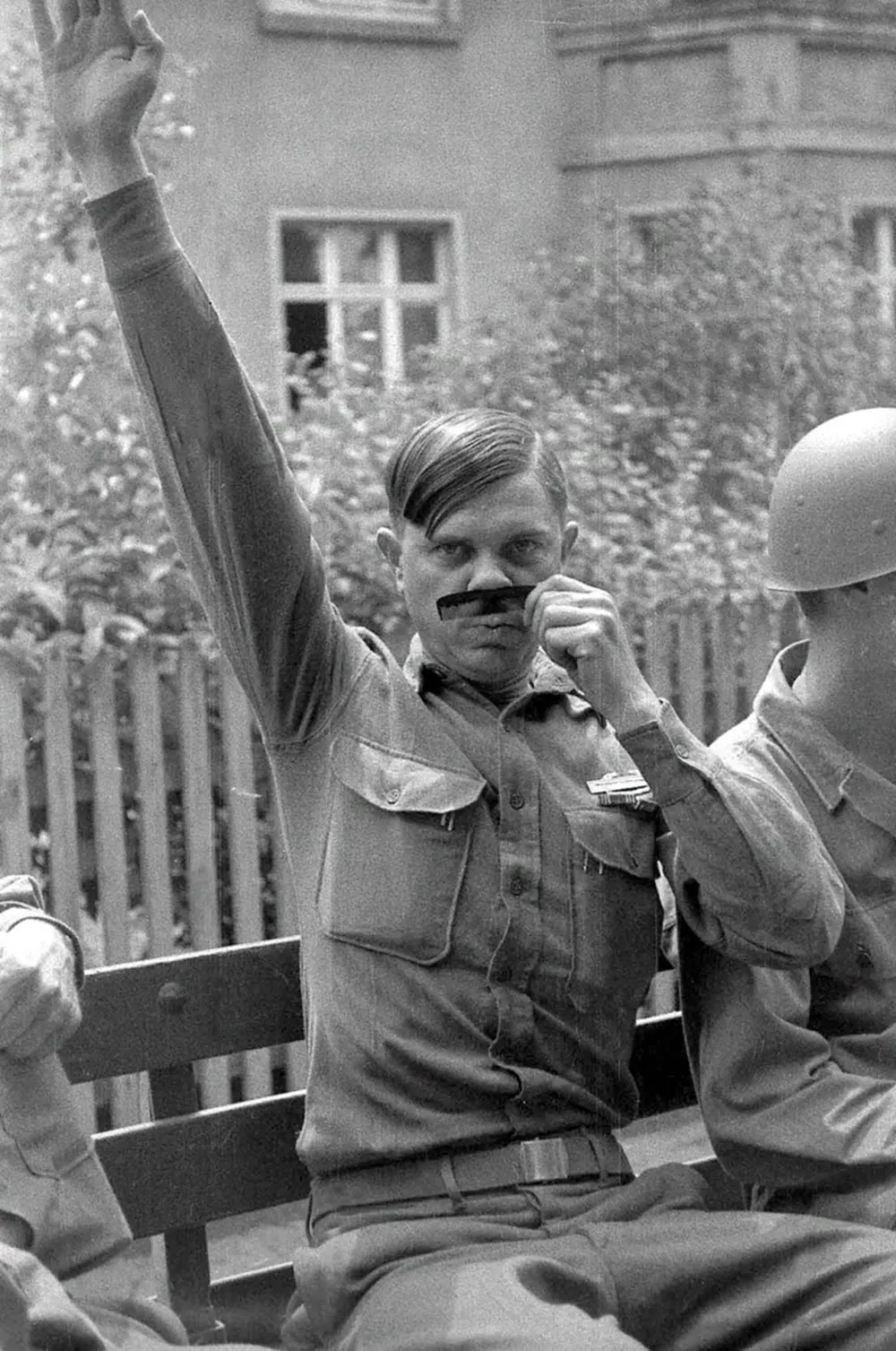 Mini Fact: This American soldier humorously mocks Adolf Hitler by fashioning a makeshift mustache and giving a satirical salute. Such acts of defiance through caricature were a common form of dissent and morale-boosting among Allied troops. In the face of immense stress and danger, humor served as a vital psychological tool, fostering camaraderie and a sense of resistance against the formidable, often dehumanizing, enemy leadership, turning fear into ridicule.
Mini Fact: This American soldier humorously mocks Adolf Hitler by fashioning a makeshift mustache and giving a satirical salute. Such acts of defiance through caricature were a common form of dissent and morale-boosting among Allied troops. In the face of immense stress and danger, humor served as a vital psychological tool, fostering camaraderie and a sense of resistance against the formidable, often dehumanizing, enemy leadership, turning fear into ridicule.
 Mini Fact: Beyond their direct military roles as messengers, detection specialists, or even for transport, animals often provided invaluable companionship and boosted morale for soldiers on all sides. This image of a dog dressed by a German soldier highlights the deep emotional bonds formed between troops and animals in the harsh realities of wartime, offering a source of comfort and a reminder of home in otherwise brutal conditions.
Mini Fact: Beyond their direct military roles as messengers, detection specialists, or even for transport, animals often provided invaluable companionship and boosted morale for soldiers on all sides. This image of a dog dressed by a German soldier highlights the deep emotional bonds formed between troops and animals in the harsh realities of wartime, offering a source of comfort and a reminder of home in otherwise brutal conditions.
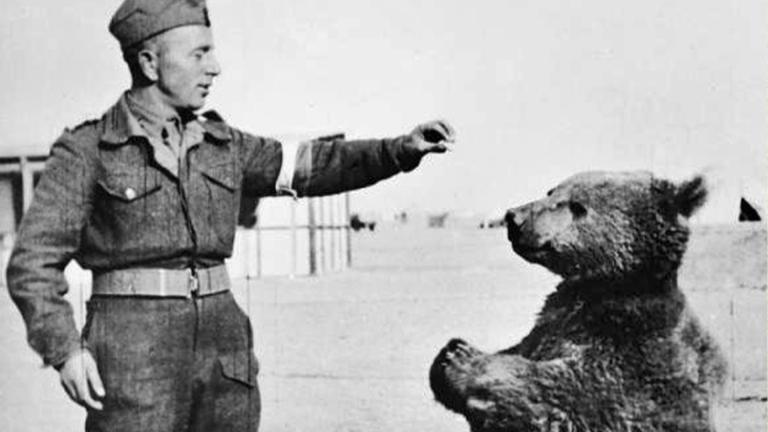 Mini Fact: Wojtek Bear, an adopted Syrian brown bear, held the official rank of enlisted soldier in the Polish Army's 22nd Artillery Supply Company. He was famously instrumental during the Monte Cassino campaign, where he helped carry heavy artillery shells to the front lines, distinguishing himself in combat. After the war, Wojtek became a beloved resident of Edinburgh Zoo, a living symbol of the unique and often heartwarming connections forged amidst the conflict.
Mini Fact: Wojtek Bear, an adopted Syrian brown bear, held the official rank of enlisted soldier in the Polish Army's 22nd Artillery Supply Company. He was famously instrumental during the Monte Cassino campaign, where he helped carry heavy artillery shells to the front lines, distinguishing himself in combat. After the war, Wojtek became a beloved resident of Edinburgh Zoo, a living symbol of the unique and often heartwarming connections forged amidst the conflict.
Mini Fact: The widespread mass production and use of Penicillin, a revolutionary antibiotic, dramatically reduced death rates from bacterial infections for both soldiers and civilians. Discovered before the war but mass-produced during it, this life-saving drug revolutionized battlefield Medicine, preventing countless deaths from wounds that would have previously been fatal and fundamentally changing the treatment of infectious diseases, marking a major turning point in medical history.
Files
To download any image, right-click on the image in your browser and select 'Save image as...' or 'Download image.'
- Depiction of a German-flagged sphere (Germanyball):
/uploads/1761775817008-t1tqzqyvgh.jpg - British soldiers riding on a tank:
/uploads/1761783785668-zfyn4xcidzc.jpg - Aerial view of Pearl Harbor during the Japanese attack, with smoke rising from battleships:
/uploads/1761780555568-6zsds7kgytl.jpg - American Marines raising the flag on Mount Suribachi during the Battle of Iwo Jima:
/uploads/1761778352579-kqhe1vm7s7.webp - Adolf Hitler saluting troops:
/uploads/1761778931722-d636yee2my.jpg - Map of the Occupation Areas in Germany, 1945:
/uploads/1761772105777-x5702yngx5p.jpg - National Flag of Nazi Germany:
/uploads/1761774556154-jxeqhywiv2m.png - War ensign (Reichskriegsflagge) of Nazi Germany, 1935-1945:
/uploads/1761774008090-bp8zmjxrjbd.png - Allied Control Council Flag 1946:
/uploads/1761783466279-x83hsm6xus.webp - Uncle Sam "I Want You" recruitment poster:
/uploads/1761778709653-b37kk3yk1g9.jpg - Dog dressed in military uniform with a cigarette in its mouth:
/uploads/1761779172144-ub5ycac55tq.jpg - American soldier mocking Adolf Hitler with a makeshift mustache and salute:
/uploads/1761779806634-duznp66sask.webp - Polish soldier with Wojtek the bear:
/uploads/1761779686906-c3sf1sml2f4.jpg - Allied landing craft and ships approaching the Normandy beaches on D-Day:
/uploads/1761780388772-zk7ra7xtwpj.jpg - German forces invading Poland:
/uploads/1761784066755-7a2tijklwa4.webp - Rising Sun Flag of Imperial Japan:
/uploads/1761784492966-ob6zjqb4znn.png - Flag for Occupied Japan:
/uploads/1761784661556-hstu5d6ukzi.png - Traumatized soldier in battle, a painting by Tom Lea:
/uploads/1761785332186-nwaa77vued.webp
See also
- "Causes of WW2" - Explore the complex historical, political, and economic factors that led to the global conflict.
- "Cold War" - Understand the post-WWII geopolitical rivalry between the United States and the Soviet Union.
- "Holocaust" - Learn about the systematic, state-sponsored persecution and murder of six million Jews by the Nazi regime.
- "Total War" - Discover how WWII necessitated the complete mobilization of a nation's resources and population for the war effort.
 Rip to the Zad German 2025 - 2025
Rip to the Zad German 2025 - 2025
